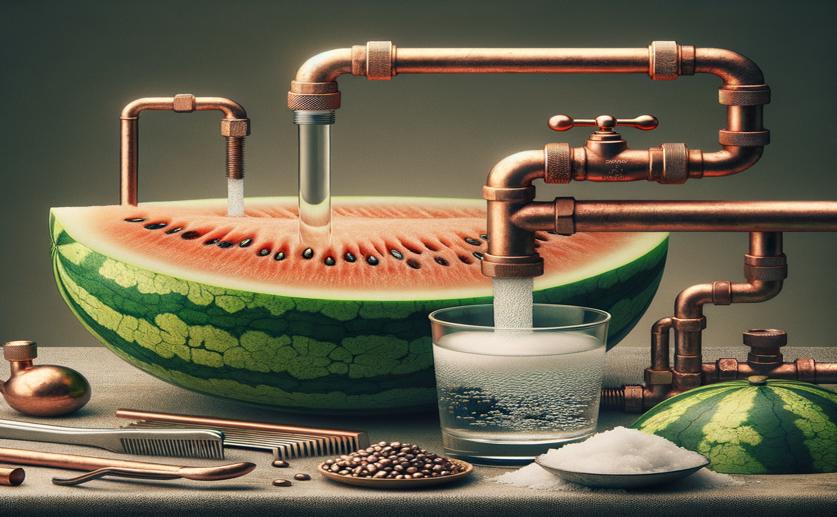
Using Watermelon Rind to Clean Water from Copper, Zinc, and Cloudiness
Jenn Hoskins
23rd May, 2024

Image Source: Natural Science News, 2024
Key Findings
- Researchers at the University of Hassan II-Casablanca, Morocco, found that watermelon rinds can effectively treat water contaminated by metals and turbidity
- Watermelon rinds achieved removal efficiencies of 97.51% for zinc, 99.88% for copper, and 99.21% for turbidity under optimal conditions
- The study suggests that watermelon rinds could be a sustainable and cost-effective alternative to traditional chemical coagulants for water treatment
EnvironmentSustainabilityBiochem
References
Main Study
1) Optimization use of watermelon rind in the coagulation-flocculation process by Box Behnken design for copper, zinc, and turbidity removal.
Published 30th May, 2024 (future Journal edition)
https://doi.org/10.1016/j.heliyon.2024.e30823
Related Studies
2) Challenges and prospects of advanced oxidation water treatment processes using catalytic nanomaterials.
3) Application of coagulation/flocculation in oily wastewater treatment: A review.
4) Wastewater treatment using a natural coagulant (Moringa oleifera seeds): optimization through response surface methodology.



 20th May, 2024 | Jenn Hoskins
20th May, 2024 | Jenn Hoskins